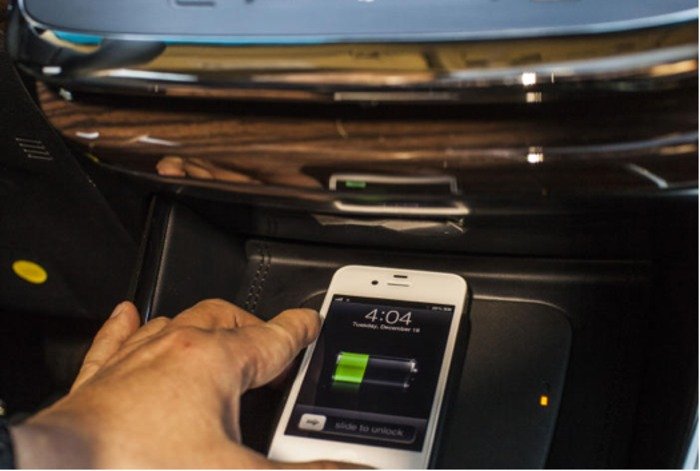Credit: Toyota
The announcement last week by Japanese automaker Toyota that it will offer wireless charging for mobile phones in its redesigned 2013 Avalon is the latest indication of the spreading acceptance of the convenient way to keep a smartphone charged up and ready to go.
Other car makers see it as an attractive option and selling point for prospective car buyers. Chrysler will offer a $200 charger option in its 2013 Dodge Dart, and General Motors has taken a $5 million ownership in wireless charging company Powermat, although it has not offered wireless charging in any vehicles yet.
Charging a smartphone by simply placing it on a charging "mat" or surface sounds simple enough, but how does it work?
It's down to a phenomenon called electromagnet induction, where an electric current is created in a conductor by a magnetic field.
Induction chargers use a coil to create an alternating electromagnetic field in a charging base station; a second induction coil in a smartphone or other portable device like a tablet or e-reader converts that magnetic field into electrical current to charge its battery.
The first practical method of generating energy by magnetic induction was patented in 1891 by electrical engineer Nikola Tesla, and his name is now used to denote a unit of magnetic field strength.
An early example of inductive power transfer in consumer devices was the crystal radio, which used the power of the radio signal itself to generate a magnetic field just strong enough to power headphones.
Own an electric toothbrush or electric shaver that automatically recharges itself when placed in or on a stand plugged into the wall? Yes, induction charging.
It didn't take smartphone makers long to realize the convenience of just placing a smartphone on a charging surface rather than having to fiddle with a charging cable and its often tiny connectors.
Some phone makers first offered wireless charging through add-on sleeves or cases than contained a charging coil and a connection to the phone's battery.
A problem hampering acceptance of the technology at first was competing charging protocols that work on some phones but not others, so interested companies joined a Wireless Power Consortium to create a new industry standard for low-power inductive charging called Qi, as used in the Toyota system.
Many smartphone makers offer or have announced phones with wireless charging capability based on the Qi protocol.
Intel and Samsung have announced plans for Qi wireless charging devices for phones and laptops in 2013, while Nokia launched two smartphone models in September, the Lumia 802 and 920 handsets, with Qi charging.
Google's Nexus 4 smartphone, made by LG, supports inductive charging using the Qi standard as does the Droid DNA available from Verizon Wireless.
And from the home to the consoles of cars, where does wireless charging go next?
Powermat, which makes inductive charging pads for home use, is planning to install charging stations in Starbucks stores and other public venues to let users recharge their phones anywhere they go.
So the ubiquitous cable-equipped chargers sold with every smartphone, tablet and e-reader may soon be gathering dust in desk drawers everywhere.















